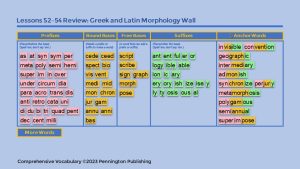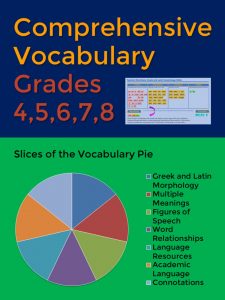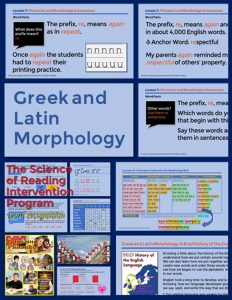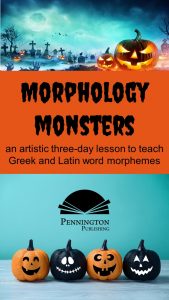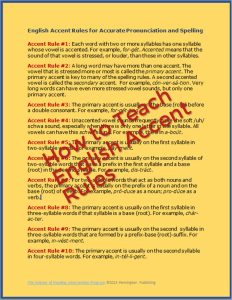My purpose in this article is convince educators to teach morphemes, not just academic words as part of a balanced vocabulary program and to provide the FREE tools to teach them. Good vocabulary instruction includes structural analysis (how words are put together), not just a list of tough academic words or difficult words which your students will be reading in a story or in an article. And good vocabulary instruction does not include a weekly list of Greek and Latin-based SAT or ACT vocabulary words with the quiz on Friday.
To support my case, that teachers should “Teach Morphemes, Not Just Whole Words,” let’s get on the same page regarding what function these Greek and Latin word parts serve as English vocabulary-builders.
According to the Cambridge Dictionary, a morpheme is the smallest unit of language that has its own meaning, either a word or a part of a word: “Worker” contains two morphemes: “work” and “-er”. Notice that the word part must be meaning-based to be a morpheme; not an inflection. An inflection is a change in the form of a word (usually the ending) which indicates a grammatical function or attribute such as person, number, case, gender, mood, or verb tense.
Of course, Greek and Latin are not the only foreign-based morphemes in English. We have plenty of other languages which provide their own morphological contributions. I do suggest including a brief lesson on English Language History to teach your students why we have so many words which have inconsistent spellings and pronunciations. However, it’s the Greek and Latin derivations which constitute the vast majority of words which you students are challenged by in difficult text. You may wish to prove this to your students by using the clear examples from this article: Greek and Latin “Dead” Languages.
Check out the Latin (in red) in this first sentence from the Federalist Papers #1 by Alexander Hamilton:
After an unequivocal experience of the inefficacy of the subsisting Federal Government, you are called upon to deliberate on a new Constitution for the United States of America.
“Government” was a Greek derivation through the French, by the way. Not to be outdone, let’s check out the Greek (in red) in this sentence about Hamilton’s arch rival, Thomas Jefferson:
Thomas Jefferson’s views on democracy were greeted with widespread cynicism, sarcasm, and even panic by European rulers.
Now, most teachers would agree that these are important Tier 2 (Beck in the Common Core Appendix A) academic words to master. I agree, but not by creating a list, having students look them up in the dictionary, and quizzing on Friday. Instead, teach the morphemes!
Let’s use the first word, unequivocal, to prove my point.
Let’s say you passed out the word list of the above red words on Monday and had students look each up in the dictionary. Students look up unequivocal. According to the Oxford Dictionary of English (3rd Edition), they would find this definition:
“Unequivocal means “leaving no doubt; unambiguous.”
This definition does provide some clues to meaning; however, for most of your students, it doesn’t provide a complete understanding of the word. As is often the case, dictionary authors use difficult vocabulary in their definitions. For many of us, the word unambiguous in this definition is just as tough to understand as Hamilton’s word, unequivocal. Additionally, dictionaries provide multiple definitions for many words, so we’re often stuck with the old conundrum: You have to know the definition to learn the definition. Lastly, dictionaries only provide the denotative meanings of the words, not the connotative meanings. In other words, authors frequently select words which mean one thing, but may suggest something else. Does Hamilton’s word choice suggest the same meanings as modern dictionaries? We simply don’t know for sure.
My point is that learning the dictionary definitions of Greek and Latin-based English words is of some value, but this approach doesn’t completely solve the problem of finding out what a word means in the context in which the author uses it. Plus, memorizing the definitions of the key Greek and Latin words would take an inordinate amount of time.
A much better way to learn challenging English vocabulary is to memorize, practice, and apply the Greek and Latin word parts.
Let me show you how efficient and effective these short-cuts to meaning can be with Hamilton’s word, unequivocal. Unequivocal has four Latin word parts:
You already know the first word part, un, which means not; equi means equal; voc means call; and al means relating to
Simply rearrange these definitions to make more sense in English.
Unequivocal means “relating to not calling equal.”
Compare the word parts definition: “relating to not calling equal” to the dictionary definition: “Unequivocal means “leaving no doubt; unambiguous.” Both are helpful, but looking up the word unequivocal in the dictionary helped your students learn one word and you probably had to translate that dictionary definition for them. Plus, think of all the wasted class time, looking up all those academic words!
Learning the four word parts in unequivocal not only helps your students learn the one word; think about how many other words include the word parts used in unequivocal. I did the research for you, because I’m sure you’re just dying to know. The un prefix is part of a whopping 3,876 words; equi is used in 196 words, including such useful words as equilibrium, equivalent, and equitable; voc is found in 167 words, such as these word gems: vocalize, evocative, and invocation; and the al suffix is in 3,544. Amazing! Learning the four Latin word parts in unequivocal is powerful. If you knew these word part definitions, you would have short-cut clues to the meaning of many more challenging words‒a total of 7,783 to be exact (morewords.com)!
Of course, beyond our single word example, unequivocal, the reading research overwhelmingly confirms the value of learning Greek and Latin word parts, not just whole words.
In a key vocabulary study, Nagy and Scott found that [Display] “Knowing Greek and Latin word parts helps students recognize and gain clues to understanding of other words that use known affixes and roots” (Nagy & Scott, 2000).

Comprehensive Vocabulary
Now, I don’t want to leave you the false impression that learning a bunch of new Greek and Latin word parts will solve all your students’ vocabulary challenges. And, just as with the whole-word definitions of important Greek and Latin words, it would be impractical to memorize all Greek and Latin word parts. But, some Greek and Latin word parts are used much more often than others. In fact, the 20 highest frequency Greek and Latin prefixes make up 97% of all Greek and Latin prefixes. With suffixes, the top four constitute 97%, as well.
Plus, although we got good clues regarding the meaning of unequivocal, it was not a perfect definition. This will be the case for many Greek and Latin-based English words. However, for other words, their Greek and Latin word parts will form perfect definitions, such as with distract. Dis means away from and tract means draw. To draw away from is a perfect definition for distract. The point I’m making about memorizing Greek and Latin word parts is that knowing some clues to the meaning of a challenging word are much better than having no clues, but when the Greek and Latin word parts form a perfect word definition, that’s a bonus!
*****
For full-year vocabulary programs which include multiple meaning words (L.4.a.), Greek and Latin morphology with Morphology Walls (L.4.a.), figures of speech (L.5.a.), words with special relationships (L.5.b.), words with connotative meanings (L.5.c.), and academic language words (L.6.0), check out the assessment-based grades 4, 5, 6, 7, and 8 Comprehensive Vocabulary.
Get the Grades 4,5,6,7,8 Vocabulary Sequence of Instruction FREE Resource:

Get the Greek and Latin Morphology Walls FREE Resource:

Get the Diagnostic Academic Language Assessment FREE Resource:

Literacy Centers, Reading, Spelling/Vocabulary, Study Skills
25 Greek and Latin Power Words, Common Core Vocabulary, Common Core Vocabulary Toolkit, Dead languages, DUAL Word Parts Worksheet, Greek and Latin, Greek and Latin Morphology, Greek and Latin prefixes, Greek and Latin roots, Greek and Latin suffixes, Greek and Latin vocabulary, Greek and Latin word lists, high frequency word parts, Mark Pennington, memorize vocabulary, morphemes, morphological, morphological awareness, morphology, research-based vocabulary word lists, structural analysis


